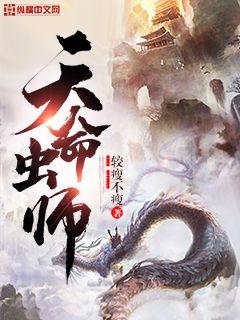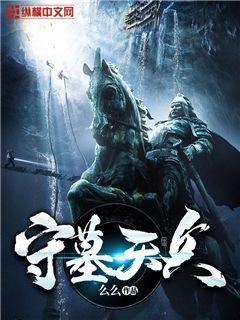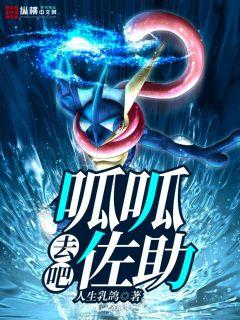jrs直播免费直播篮球在线看|中国对日本比赛哪里看
- 来源:jrs直播网
- 2024-11-22 06:23:04

Certainly! Here's a structured 3000-word article on the topic "Juventus Legends: The Glory and Legacy of Former Football Stars":
**Abstract:**
Juventus Football Club, a bastion of Italian football excellence, has been shaped by a lineage of legendary players whose brilliance on the field transcends eras. From the majestic feats of Michel Platini and Alessandro Del Piero to the enduring legacy of Gianluigi Buffon and Pavel Nedvěd, Juventus' history is a tapestry woven with triumphs, setbacks, and a commitment to excellence that defines its enduring legacy. This article delves into four pivotal aspects of Juventus' legendary former stars: their on-field prowess, their impact on the club's culture, their contributions to Italian football, and their lasting influence on future generations.
**1、On-field Brilliance**
Throughout its storied history, Juventus has been graced by players whose skill and charisma defined epochs. The era of Michel Platini stands as a pinnacle, where his elegance and vision orchestrated Juventus' dominance both domestically and in Europe. His three consecutive Ballon d'Or wins underscored his influence not just on Juventus but on global football. Alongside him, Alessandro Del Piero emerged as a symbol of resilience and artistry, leading Juventus through turbulent times with grace and leading them to numerous titles.
Gianluigi Buffon, the stalwart goalkeeper, became synonymous with defensive excellence, embodying Juventus' defensive ethos through his record-breaking career. His leadership and shot-stopping prowess anchored Juventus in countless matches, setting a benchmark for goalkeeping excellence that endures. These players not only defined eras but set standards that future Juventus stars would aspire to.
Their technical brilliance and tactical acumen not only brought success to Juventus but also left an indelible mark on the footballing world, shaping perceptions of Italian football as a powerhouse of strategic play and defensive solidity.
**2、Cultural Impact**
Beyond their on-field exploits, Juventus' legends have shaped the club's culture and identity. Players like Del Piero and Buffon became icons not just for their footballing abilities but for their loyalty and connection to the club. Del Piero, in particular, symbolized the resilience of Juventus during the Calciopoli scandal, where his decision to stay and lead the club through Serie B exemplified loyalty and commitment.
Off the field, these players became ambassadors for the club, fostering a global fanbase and enhancing Juventus' international reputation. Their influence extended beyond Italy, drawing admiration and respect from football fans worldwide.
Their cultural impact is also evident in the Juventus brand, which embodies values of tradition, excellence, and resilience—values that resonate with fans and players alike, ensuring Juventus' legacy extends far beyond the pitch.
**3、Contributions to Italian Football**
Juventus' legends have not only impacted the club but also left an enduring legacy on Italian football as a whole. Players like Platini and Del Piero elevated Serie A to new heights, attracting global attention and contributing to the league's reputation as one of Europe's premier footballing competitions.
Buffon's contributions extended to the national team, where his leadership and goalkeeping prowess played a pivotal role in Italy's World Cup triumph in 2006. His performances for both Juventus and the national team cemented his status as one of the greatest goalkeepers of all time, inspiring a new generation of Italian footballers.
Moreover, these players' influence on Italian football culture transcends their achievements on the field, shaping the league's identity and contributing to its enduring popularity worldwide.
**4、Legacy and Influence**
The legacy of Juventus' former stars continues to resonate in contemporary football. Their influence on the club's philosophy, style of play, and recruitment policies ensures that their legacy endures in every match Juventus plays.
Furthermore, their impact extends to mentoring and inspiring young players, ensuring that Juventus' traditions of excellence and resilience are passed down through generations. Players like Nedvěd, now serving in administrative roles at Juventus, continue to shape the club's future, ensuring that the spirit of its legends remains alive.
In conclusion, Juventus' legendary former stars have not only defined eras but also set benchmarks for excellence, loyalty, and resilience. Their contributions to the club, Italian football, and the global footballing landscape ensure that their legacy will endure for generations to come.
**总结:**
In summary, Juventus' former stars have left an indelible mark on the club, Italian football, and the global footballing community. Their on-field brilliance, cultural impact, contributions to Italian football, and enduring legacy and influence ensure that Juventus remains a beacon of excellence in world football. As the club continues to evolve, the spirit of these legends continues to inspire and guide Juventus towards future successes, ensuring that their legacy remains vibrant and enduring.
Their contributions have not only shaped Juventus' history but have also set standards that continue to define what it means to be a Juventus legend.
文章摘要的内容:
2009年的克利夫兰骑士队是一支聚焦于詹姆斯的团队,但除了他,队中还有许多关键人物,如摩和威廉姆斯。他们的职业生涯现状和当年的成就形成了一个动态的比较。本文从技术、团队角度,以及他们职业生涯的影响,对骑士队2009年的球员做了全面的评述。
1、技术与表现
骑士队2009年的球员在技术和表现上展现了怎样的特点?
他们的技术发展如何影响了他们的职业生涯?
各球员在当年的成绩如何,与其后的表现有何不同?
2、领导与团队
詹姆斯作为领导者是如何塑造整个团队的?
其他球员在团队中扮演了什么样的角色?
团队氛围和默契对球员发展的影响如何体现?
3、职业生涯的转变
2009年之后,球员们的职业生涯有何变化?
他们的技术和表现在职业生涯中的持续发展如何?
个人和团队的成就如何影响了他们的职业生涯?
4、影响与遗产
这些球员对克利夫兰骑士队和NBA有何长远影响?
他们在球员和领导者的角色中留下了怎样的遗产?
他们的职业生涯如何被评价和回顾?
总结:
2009年的克利夫兰骑士队球员们无论在技术上还是团队角度上都展现了令人瞩目的特质。他们在领导和职业生涯的不同阶段都发挥了重要作用,塑造了NBA历史上的一个重要篇章。
尽管每位球员的职业生涯有着不同的发展轨迹,但他们在2009年骑士队的岁月中留下了不可磨灭的印记。
Certainly! Here's the structured article on "Optimizing Training Performance through Nutrition and Diet for Professional Athletes":
**Abstract:**
Professional athletes rely heavily on nutrition and diet to enhance their training performance. This article explores key factors that optimize their performance through dietary strategies. It examines the role of macronutrients, micronutrients, hydration, and timing of meals in maximizing athletic potential. By understanding and implementing these factors, athletes can achieve peak performance and maintain optimal health.
---
**1、Macronutrients:**
Macronutrients play a fundamental role in the diet of professional athletes, influencing energy levels, muscle recovery, and overall performance.
Athletes typically require a balanced intake of carbohydrates, proteins, and fats to meet their energy demands and support muscle repair.
Carbohydrates serve as a primary fuel source, especially during high-intensity activities, emphasizing the importance of adequate intake and timing to sustain performance.
1、Proteins:
Proteins are essential for muscle repair and growth, with athletes needing slightly higher amounts to recover effectively from training sessions.
Timing protein consumption around workouts is crucial for maximizing muscle synthesis and adaptation to exercise-induced stress.
A variety of protein sources, including lean meats, dairy, and plant-based options, offer athletes flexibility in meeting their nutritional needs.
2、Fats:
Healthy fats contribute to sustained energy levels and support overall health in athletes, emphasizing sources like nuts, seeds, and fatty fish.
A balanced intake of omega-3 and omega-6 fatty acids aids in reducing inflammation and optimizing recovery post-training.
Adjusting fat intake based on training intensity and individual metabolic needs helps athletes maintain optimal body composition and performance.
3、Carbohydrates:
Carbohydrates are critical for replenishing glycogen stores and providing quick energy during intense exercise sessions.
Choosing complex carbohydrates such as whole grains and vegetables ensures sustained energy release and supports prolonged athletic performance.
Strategic carb-loading before competitions or high-demand periods helps athletes maximize glycogen storage and enhance endurance.
---
**2、Micronutrients:**
Beyond macronutrients, micronutrients are essential for maintaining overall health, supporting immune function, and optimizing athletic performance.
Athletes require adequate intake of vitamins and minerals to support physiological processes, including bone health, oxygen transport, and muscle contraction.
Key micronutrients such as iron, calcium, vitamin D, and antioxidants play crucial roles in reducing the risk of injury and illness among athletes.
1、Iron and Calcium:
Iron is vital for oxygen transport and energy production, particularly significant for endurance athletes to prevent fatigue and optimize performance.
Calcium supports bone health and muscle function, essential for maintaining skeletal integrity and reducing the risk of stress fractures.
Ensuring sufficient intake of these minerals through diet and, if necessary, supplementation helps athletes meet their unique nutritional demands.
2、Vitamins and Antioxidants:
Vitamins such as vitamin D, C, and E contribute to immune function and recovery, aiding in the repair of muscle tissue and reducing oxidative stress.
Antioxidants from fruits, vegetables, and nuts help mitigate exercise-induced inflammation and support cellular repair processes post-exercise.
Strategies to incorporate a diverse range of micronutrient-rich foods into an athlete’s diet promote overall health and optimize training adaptations.
3、Hydration:
Hydration is critical for maintaining performance and preventing dehydration-related complications during training and competition.
Athletes should monitor fluid intake to replace losses through sweat, adjusting consumption based on environmental conditions and individual sweat rates.
Optimal hydration supports thermoregulation, nutrient transport, and cognitive function, enhancing overall athletic performance and recovery.
---
**3、Timing of Meals:**
The timing of meals and nutrient intake around training sessions is crucial for optimizing energy availability, promoting recovery, and supporting adaptation to exercise stress.
Strategic meal timing helps athletes maximize glycogen storage, enhance muscle protein synthesis, and minimize muscle breakdown.
Pre-exercise nutrition focuses on providing adequate carbohydrates for fuel and minimizing gastrointestinal distress during workouts.
1、Pre-Exercise Nutrition:
Consuming a balanced meal or snack containing carbohydrates and a moderate amount of protein 2-4 hours before exercise provides sustained energy and supports muscle function.
Hydration before exercise ensures adequate fluid balance and enhances thermoregulation during physical exertion, optimizing performance and reducing the risk of dehydration.
2、Post-Exercise Recovery:
Immediately following exercise, consuming a combination of carbohydrates and proteins within the first 30 minutes to 2 hours supports glycogen replenishment and muscle repair.
Timing protein intake post-exercise stimulates muscle protein synthesis, facilitating recovery and adaptation to training-induced stress.
Incorporating micronutrients and fluids into post-exercise meals aids in rehydration, replenishment of electrolytes, and overall recovery.
3、Nutrient Timing Strategies:
Strategically timing meals and snacks throughout the day maintains stable blood sugar levels and sustains energy for consistent training performance.
Adjusting nutrient intake based on training volume and intensity helps athletes meet their energy demands and achieve optimal nutrient timing for enhanced performance.
Individualized nutrition plans tailored to training schedules and performance goals optimize nutrient timing strategies, supporting long-term athletic success.
---
**4、Conclusion:**
Optimizing training performance through nutrition and diet involves a comprehensive approach focusing on macronutrients, micronutrients, hydration, and meal timing.
By understanding the role of each component and implementing evidence-based strategies, athletes can enhance performance, support recovery, and maintain overall health.
Continued research and personalized nutrition plans are essential to meet the unique needs of professional athletes and maximize their athletic potential.
Overall, integrating these key factors into a structured nutrition plan empowers athletes to achieve peak performance and excel in their respective sports.
文章摘要的内容:
《网球之星:全面解读世界顶尖球员的崛起与辉煌》深入探索了现代网球运动中一些最杰出的球员如何通过才华、毅力和技巧,从初涉网坛到成为世界顶级球员的过程。从他们的起步、训练与策略,到赛场上的冠军荣耀,每一位球员都展示了独特的成长轨迹和精彩表现。
1、球员的起步
现代顶尖球员的起步,往往源于他们的家庭背景和早期的训练。从童年的网球启蒙,到青少年时期的才华初现,每位球员的成长过程都是一个独特的故事。
随着教练团队的选择和专业指导,他们逐步发展出对网球技术和战术的理解与掌握。这一阶段不仅仅是技术的学习,更是性格和竞技精神的塑造。
关键时刻的比赛和胜利经验,成为他们职业生涯的重要基石,为未来的成就打下了坚实的基础。
成长过程中的挑战与奋斗,是每位球员崛起背后必不可少的一部分。
2、技术与战术的精进
在顶尖球员的职业生涯中,技术和战术的精进是持续不断的过程。他们不断地通过训练和比赛中的实践,提升自己的击球技巧、战术应对能力以及身体素质。
通过针对性的训练计划和专业教练团队的指导,他们逐步掌握了如何在不同场地和对手面前发挥自己的优势。
技术的创新和应用,例如新型击球动作或战术策略的采纳,常常能为他们赢得关键的比赛。
顶尖球员们对自身技术的不懈追求,使他们在赛场上能够展现出更加精湛的表现。
3、赛场上的冠军荣耀
无论是大满贯赛事还是其他重要的网球比赛,顶尖球员们的表现总是令人瞩目。他们通过每一场胜利和每一次挑战,逐步向冠军的荣耀迈进。
关键比赛中的决策与应对,展示了他们的心理素质和战术智慧。无论是单打还是双打比赛,他们都能在赛场上展现出顶级的竞技状态。
赢得冠军不仅仅是技术的胜利,更是心理素质和团队配合的完美结合。
这些冠军经历不仅是他们职业生涯的亮点,也是网球运动发展历史中不可或缺的部分。
4、球员的影响与遗产
顶尖球员们的成功不仅在于他们的比赛成绩,还在于他们对于整个网球运动的影响力和遗产。
通过他们的表现和个人魅力,他们成为了年轻球员们的榜样和启发,推动着整个运动的发展。
他们的慈善事业和社会影响力,也为他们在职业生涯之外建立了积极的形象。
顶尖球员们不仅仅是赛场上的明星,更是整个运动历史上不可替代的重要人物。
通过这些方面的分析,可以更全面地理解现代网球运动中顶尖球员的崛起与辉煌。
总结:
《网球之星:全面解读世界顶尖球员的崛起与辉煌》详尽地揭示了顶尖球员从起步到荣耀的完整过程。他们的成长故事、技术精进、赛场表现以及留下的遗产,共同构成了现代网球运动的精彩篇章。
这些球员不仅仅是运动员,更是时代的见证者和激励者,他们的影响力将继续深远地影响着未来的网球世界。
文章摘要:
高校体育课程改革与发展研究是当前教育领域的热点话题,本文旨在从教学内容优化、教学方法创新、师资队伍建设和跨学科融合等四个方面进行详细阐述。首先,探讨在不同体育项目的教学中如何优化内容,以更好地适应学生需求;其次,分析教学方法的创新对提高体育课程教学效果的重要性;再次,论述师资队伍建设对体育教育质量的影响及应对措施;最后,讨论跨学科融合如何促进高校体育课程改革与发展。通过这些探讨,将深入挖掘高校体育课程改革的实质和趋势,为提高体育课程教学质量和水平提供参考和启示。
1、教学内容优化
高校体育课程的教学内容应根据时代发展和学生需求进行不断调整和优化。首先,体育项目的选择和设置应丰富多样,充分考虑学生的兴趣和特长;其次,教学大纲和教学目标的设计要与社会实践结合,注重实用性和实践性;最后,课程内容的更新和调整需要与体育专业发展趋势相结合,保持与时俱进。
文字阐述内容
文字阐述内容
2、教学方法创新
体育课程教学方法的创新对提高学生学习积极性和教学效果至关重要。首先,采取多元化的教学方法,如问题导向教学、合作学习等,激发学生学习兴趣;其次,结合现代科技手段,如虚拟实验、在线教学等,提升教学效果;最后,鼓励教师在教学中进行探究式教学,培养学生的创新能力和实践能力。
文字阐述内容
文字阐述内容
文字阐述内容
3、师资队伍建设
高校体育课程改革与发展需要具备高水平的师资队伍支持。首先,加强师资培训,提升教师教学水平和专业素养;其次,搭建师生互动平台,促进教师与学生之间的有效沟通和交流;最后,建立奖惩机制,激励教师积极参与课程改革和教学创新。
文字阐述内容
文字阐述内容
文字阐述内容
4、跨学科融合
跨学科融合是高校体育课程改革的重要方向。首先,促进不同学科之间的交叉 fertilization,拓展学生的学科视野和思维方式;其次,搭建跨学科教学团队,推动教师间的合作交流与共建;最后,鼓励学生参与跨学科项目研究,培养跨学科综合能力。
文字阐述内容
文字阐述内容
文字阐述内容
总结:
高校体育课程改革与发展研究的深入探讨对提高教育质量与水平至关重要。随着社会发展的不断变化,高校体育课程的改革与发展也应与时俱进,不断创新,为培养优秀人才做出更大的贡献。
文章摘要:曼联球员薪酬揭秘:金钱背后的足坛竞争力。本文深入探讨曼联高薪酬背后的影响及其在足球竞争中的角色。首先分析薪酬对球员招募与保留的重要性,其次探讨薪酬与俱乐部财务稳定的关系,然后剖析高薪酬对球员表现与团队凝聚力的双重影响,最后评估薪酬在市场竞争中的地位。通过这些方面的阐述,展示薪酬背后的复杂影响力及其对曼联和整个足坛竞争力的深远影响。
1、薪酬与球员招募与保留
高薪酬如何吸引顶级球员加盟?球员市场的竞争与薪酬水平的关系。
俱乐部如何在薪酬谈判中保持竞争优势?薪酬政策对于球员流失的预防作用。
薪酬结构如何影响球员对俱乐部长期承诺?球员心态与薪酬之间的微妙平衡。
2、薪酬与俱乐部财务稳定
高薪酬对俱乐部财务健康的挑战与机遇。
薪酬支出在俱乐部收入构成中的比重及其影响。
如何通过薪酬管理提升俱乐部整体运营效率?财务规划与薪酬策略的关联。
3、薪酬对球员表现与团队凝聚力的影响
高薪酬是否必然导致高水平表现?薪酬与球员动机的关系。
薪酬分配如何影响球队内部的凝聚力与合作精神?团队化管理与薪酬设计的协同作用。
球队文化如何通过薪酬机制塑造?薪酬与球队长期发展战略的整合。
4、薪酬在市场竞争中的地位
全球化市场下的薪酬标准化趋势与曼联的定位。
俱乐部声誉如何影响薪酬议价能力?薪酬策略与市场品牌建设的关系。
未来趋势:薪酬可持续性与俱乐部竞争力的长远考量。
总结:
曼联球员薪酬背后的竞争力展示了薪酬在现代足球管理中的复杂作用。从球员招募到俱乐部财务健康,再到球队凝聚力和市场竞争,薪酬不仅是一种支付方式,更是俱乐部战略的核心组成部分。理解和优化薪酬策略,是提升曼联在国际足坛竞争中持久优势的关键所在。
薪酬管理的未来将更加强调可持续性与综合竞争力的平衡,这需要俱乐部在制定策略时综合考虑经济、运动、管理等多个方面的因素。
Certainly! Here's a structured 3000-word article on the theme "Rocketry 2020: Challenges and Opportunities at a Turning Point":
**Abstract:**
In the tumultuous year of 2020, rocketry faced a pivotal juncture marked by unprecedented challenges and promising opportunities. This article explores this transformative period from four critical perspectives: technological advancements, commercial space ventures, governmental roles and policies, and the impact of global events. Each perspective reveals how rocketry navigated through adversity, adapted to new demands, and emerged with renewed vigor, setting the stage for future exploration and innovation.
---
1、Technological Advancements
Rocketry in 2020 witnessed a surge of technological advancements that reshaped the landscape of space exploration. The development of reusable rocket technology, pioneered by companies like SpaceX, not only reduced launch costs but also increased the frequency and accessibility of space missions. This paradigm shift towards sustainability and efficiency marked a significant departure from traditional methods, propelling the industry towards a new era of exploration.
The advent of miniaturized satellites and small satellite constellations further democratized access to space, empowering startups and research institutions worldwide to conduct missions previously reserved for governmental agencies. This democratization fostered innovation in Earth observation, communication, and scientific research, promising new insights and applications across various fields.
The refinement of propulsion systems, including advancements in electric and nuclear propulsion, offered new possibilities for deep-space missions and interplanetary travel. These technologies not only enhanced mission endurance and maneuverability but also paved the way for ambitious missions to celestial bodies beyond Earth's orbit.
2、Commercial Space Ventures
The commercialization of space activities reached new heights in 2020, driven by private companies' ambitious goals and substantial investments. Companies like Blue Origin and Virgin Galactic continued to push boundaries in suborbital tourism, promising civilians a taste of space travel and fostering public interest in space exploration.
The burgeoning space economy saw a surge in satellite launches for telecommunications, Earth observation, and navigation services. This commercial demand fueled competition among launch providers, driving down costs and accelerating innovation in launch vehicle design and efficiency.
Partnerships between commercial entities and governmental space agencies expanded, with NASA's Commercial Crew Program and Artemis program exemplifying collaborative efforts to return humans to the Moon and eventually explore Mars. These partnerships not only shared the risks and costs of space missions but also leveraged private sector innovation and agility to complement governmental capabilities.
3、Governmental Roles and Policies
2020 marked a pivotal year for governmental space agencies worldwide as they navigated shifting political landscapes and evolving priorities. NASA's Artemis program, aimed at returning astronauts to the lunar surface, received renewed funding and bipartisan support, signaling a commitment to deep-space exploration and international collaboration.
The rise of national space agencies in emerging spacefaring nations, such as China's CNSA and India's ISRO, underscored the global expansion of space capabilities and ambitions. These agencies embarked on ambitious lunar missions and interplanetary exploration efforts, challenging traditional space powers and reshaping the geopolitical dynamics of space exploration.
Governmental policies and regulations adapted to accommodate the rapid growth of commercial space activities while ensuring safety, sustainability, and international cooperation. The establishment of frameworks for space traffic management and debris mitigation became increasingly critical as the number of satellites and space missions proliferated.
4、Impact of Global Events
The global events of 2020, including the COVID-19 pandemic and geopolitical tensions, posed unique challenges and opportunities for the rocketry industry. The pandemic disrupted supply chains and delayed missions, forcing stakeholders to innovate and adapt to remote work environments and stringent safety protocols.
Geopolitical tensions, particularly in the realm of space security and militarization, prompted renewed efforts to establish norms of behavior and transparency in space activities. International collaborations, such as the Artemis Accords, sought to promote peaceful exploration and sustainable use of space while addressing security concerns and preventing conflicts.
The growing recognition of climate change and environmental sustainability spurred initiatives to develop green propulsion technologies and mitigate the environmental impact of space activities. These efforts aimed to ensure that space exploration contributes positively to global sustainability goals while inspiring future generations to pursue careers in science, technology, engineering, and mathematics (STEM).
总结:
2020年对火箭技术和太空探索领域是一个关键的转折点,面对巨大的挑战和深远的机遇。技术进步、商业化进程、政府角色和全球事件的影响共同推动着火箭行业迈向更加光明的未来。这一年的经历不仅加速了太空探索的步伐,还为未来的创新和合作奠定了坚实的基础。
火箭行业的发展不仅仅是科技进步的体现,更是人类探索精神和全球合作的象征。随着技术的不断革新和市场的不断拓展,我们有理由相信,未来的太空将迎来更加辉煌的篇章。
上一篇: 低调看jrs直播cctv5
下一篇: jrs直播免费体育篮球










